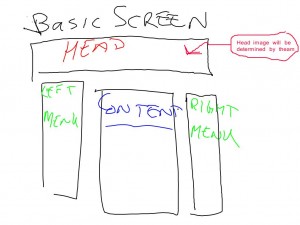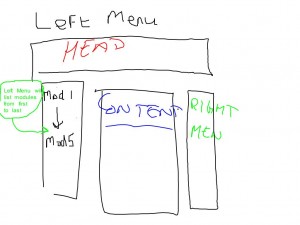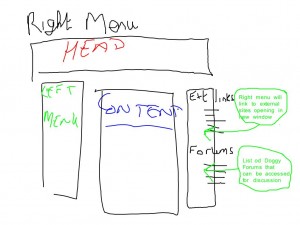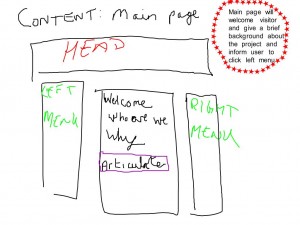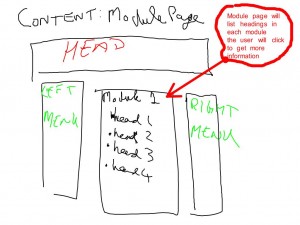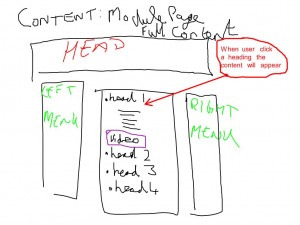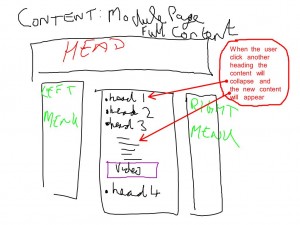Instructional Design and eAuthoring Module Reflection
Introduction
During the first week of this module we were split into groups and asked to develop an elearning resource. After some discussion in my group the topic changed to owning a dog, I had recently bought a new puppy and told the group about trying to toilet train him. Other members of the group also owned dogs and said they wish they had a resource available to help them when training their dogs. So the topic was set and we picked the name Team WOOF.
At the start we probably jumped into the deep end of trying to perform, i.e. get the website up and running. However, based on Tuchman’s model of group development, we quickly reverted back to the storming and norming phases to set ourselves clear objectives. At the start we all agreed to find four pieces of literature each that we thought would be relevant, all but one member of the group completed this task stating they thought it was agreed that only one person source relevant articles. I would not agree to this as I wanted to be part of the research phase.
In this reflection I will look at the design models used, our learning objectives, WordPress and storyboarding relating to the group and my own individual experiences.
Design models
We had to consider the Macro, the bigger picture and the Micro, more detailed picture, models when designing our resource. For the Macro model we decided to use the ADDIE which is a five-phase instructional design model consisting of Analysis, Design, Development, Implementation, and Evaluation. Each step has an outcome that feeds into the next step in the sequence, however I agree that evaluation is not a standalone step but is continuous throughout. For the Micro model decided to use Gagné 9 events of instruction. I have used Gagné’s model before in work and find it very useful to help ensure all angles are covered.
Learning Objectives
When we set the teams learning outcomes we used Blooms Taxonomy to help the learner comprehend, apply, analyse, synthesis and evaluate the new knowledge to reinforce it into long term memory. We arrived at six key learning objectives for the resource, see Appendix I. It was clear that toilet training a dog was too narrow a focus so we widened it out. At one stage I had to ask the group if we were going too far now and trying to fit too much in, they agreed and we settled on the six learning out comes.
Although we had very specific objectives I was surprised at the amount of concept drift our team had. We had to continuously assess where we were at and where we wanted to go, we had a central line but we still went too far one way or the other and had to bring it back. An example of this was initially picking toilet training and finding this too narrow, we then looked at general behaviour of dog and trainer but these was too much and then finally struck the right balance with the objectives we had set. Interestingly though we had to be careful not to drift in each objective also.
WordPress
It was decided early on that we would use the free tool WordPress to develop and run our site. The benefits include easily added content, content can be manipulated and a relevant theme applied, see my technology pitch on 10 December 2013 in my eportfolio. I set up the site and applied a free theme. There were continuous changes needed as we went along and I was asked to keep the site up to date, which I did. When we developed the content based on the learning outcomes they were added in nice small bite sized pieces, I looked on YouTube for short video clips and embedded them on the site.
When designing this resource we had to remember that quality was better than quantity and that people expected interactive sites (Allen 2007:P55). Instead of incorporating a bulletin board discussion forum we decided to link to existing blogs on the internet. I took on the job of identifying these sites and ensure they could provide what we needed.
Accessibility was also discussed and the use of screen readers, cascading style sheets and language used. Although it was decided to develop the site in English we have to be careful not to use slang language that is only understood in Ireland; the internet and elearning is growing experientially in the developing world (Rani & Kant 2013). Types of devices was also discussed with PC’s, laptops, tablets and smart phone all being potential devices that could be used to access our resource. I found a plug-in for WordPress that can render the device differently on the small screen with mainly text based information.
Storyboarding
Storyboarding was not entirely new to me as I have seen examples of it before, but I had never actually done one before or so I thought. Storyboards are sequential images that show how something will come together. When I was a computer analyst I had to draw images of web pages and how they should look. When I did this for this project, using an interactive whiteboard, I found they were indeed a storyboard of sorts, see Appendix II. I found this exercise very helpful and will defiantly use it in the future. I shared my images with the group and they were incorporated in the final storyboard submission.
Conclusion
In this reflection I have looked at the design models used, our learning objectives, WordPress and storyboarding relating to the group and my own individual experiences. To evaluate the site we used the LORI & Nielsen’s heuristics as well as asking my 11 year old daughter to look at one element and then I recorded her training our puppy to lie down, see video on my eportfolio.
I have enjoyed working in the group and I am happy I have pulled my weight and done all asked of me. At different points I used initiative to ensure some task were complete on time, such as selecting a theme for the site. As a group we relied upon each other’s strengths, mine being WordPress, and did not push too many boundaries
The only down part to the exercise was one group member of the group waited until the end to make a substantial contribution. If I was to repeat the task again I would ask for a project manager to be appointed to ensure clarity and consistency in the work. I believe a project manager would have ensured everyone knew what had to be done and when.
References
Allen M. (2007), Designing Successful e-Learning: Forget What You Know About Instructional Design and Do Something Interesting, Pfeiffer, San Franciso.
Rani S. & Kant K. (2013), e-Learning Tools- A New Innovation in Teaching Learning, Golden Research Thoughts, Volume 2, Issue 9, Pages 1-5.
Other readings
Bentosela M., Barrera G., Jakovcevic A, Elgier A.M., Mustaca A.E. (2008), Effect of reinforcement, reinforcer omission and extinction on a communicative response in domestic dogs (Canis familiaris), Behavioural Processes, Volume 78, Issue 3, July 2008, Pages 464-469.
Beetham H., Sharpe R. (2007), Rethinking Pedagogy for a Digital age Designing and Delivering E-Learning, Routledge, Oxan UK.
Braem M.D., Mills D.S. (2010), Factors affecting response of dogs to obedience instruction: A field and experimental study, Applied Animal Behaviour Science 125, Pages 47–55.
Bush K. (2010), The Dog Expert, Expert Books, London.
Conrad K. (2000), Instructional Design for Web-Based Training, HRD Press, Amherst, MA.
dogscholar.com (2009), Choosing the Right Dog Trainer, http://dogscholar.com/choosing-the-right-dog-trainer/, accessed 7 November 2013.
dogscholar.com (2009), How to Potty Train a Puppy http://dogscholar.com/how-to-potty-train-a-puppy/, accessed 25 November 2013.
dogscholar.com (2010), Rubbing Your Dog’s Nose in Its Mess Is a Waste of Time for Both Owner and Pet, http://dogscholar.com/rubbing-your-dogs-nose-in-its-mess-is-a-waste-of-time-for-both-owner-and-pet/, accessed 7 November 2013.
Gagné, R. M., Briggs, L. J., Wager, W. W., Golas, K. C., & Keller, J. M. (2004). Principles of instructional design. Belmont, CA: Wadsworth.
Herron M.E., Shofer F.S., Reisner I.R. (2009), Survey of the use and outcome of confrontational and non-confrontational training methods in client-owned dogs showing undesired behaviors, Applied Animal Behavior Science, 117, 47-54.
Jochems, W., van Merrienboer, J. and Koper, R. (2004) Integrated e-Learning: Implications for Pedagogy, Technology and Organization, Routledge Falmer, London.
Merrill, D., (2002), First Principles of Instruction, ETR&D, Vol. 50, No. 3, 2002, pp. 43-59, accessed from http://mdavidmerrill.com/Papers/firstprinciplesbymerrill.pdf 12 December 2013.
Morrison, G. R. (2011). Designing effective instruction 6th Edition, Hoboken, NJ: Wiley.
Tapscott D., Williams A.D. (2008), Wikinomics How Mass Collaboration Changes Everything, Penguin Group, New York.
Tuckman B.W., Jensen M.A.C. (1977), Stages Of Small-Group Development Revisited, Group & Organization Studies (pre-1986); Dec 1977; 2, 4; ABI/INFORM Global pg. 419
Yamamoto M. , Kikusui T., Ohta M. (2009), Influence of delayed timing of owners’ actions on the behaviors of their dogs, Canis familiaris, Journal of Veterinary Behavior: Clinical Applications and Research Volume 4, Issue 1 , Pages 11-18.
Appendix I
Learning Objectives
1) Understand the dog training process and its importance on the wellbeing of both dog and owner.
2) Apply key techniques in house breaking
3) Understand the importance of properly socialising your dog/puppy
4) Implement a simple technique to ensure your dog/puppy is effectively toilet trained.
5) Explore Dog Behaviour and obedience techniques
6) Teach a series of common tricks for dogs.
Appendix II
Storyboard
My Social Media links
-
Recent Posts
Modules
Categories
Archives
- December 2024
- December 2023
- March 2016
- January 2016
- August 2015
- June 2015
- May 2015
- April 2015
- March 2015
- February 2015
- November 2014
- October 2014
- September 2014
- August 2014
- July 2014
- June 2014
- May 2014
- April 2014
- March 2014
- February 2014
- January 2014
- December 2013
- November 2013
- October 2013
- September 2013
Meta
